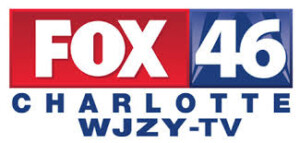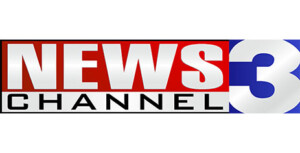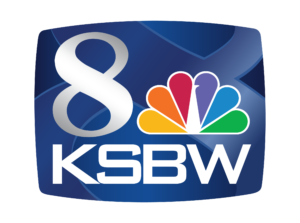A Tuesday NAB panel explores the changing nature of how — and why — advertisers partner with local media, and the role traditional outlets play in driving consumers to the Web and, ultimately, business. One consensus: local media still has unmatched reach and clout.
Local Media Remains A Powerful Ad Tool
As sexy as new-fangled advertising options — programmatic ad buys, content marketing and the like — may be, advertisers are still most likely to partner with local broadcasters who put effort into understanding their businesses, and are their best bets for reaching customers.
“I am a relationship buyer,” says Tyler Corder, CFO of the Findlay Automotive Group. “If you take the time to get to know my business, I am much more likely to buy advertising.”
He says he also wants access to the goods local media have — databases and websites among them. “The reason we do business with local partners is because they have a local following,” he says. “That’s the most valuable thing a local media partner has.”
Corder’s remarks at the NAB Show Tuesday morning were part of a panel exploring the changing nature of how — and why — advertisers partner with local media, and the role traditional outlets play in driving consumers to the Web and, ultimately, business.
Although panelists — who represented car dealers, the hospitality industry and an ad agency — say they are setting aside an increasingly bigger budget for digital advertising, local media outlets, including TV stations, are still of utmost importance for driving business.
That is especially true for the two car dealers on the panel — Corder and Don Forman, owner of Forman Automotive and United Nissan — who say local media has unmatched reach and clout.
“The local consumer is on the local media outlet, and that’s the consumer we want,” Corder says. Although “digital is part of the equation,” Corder says he considers local media his primary partners in driving awareness. He says he is more concerned with his dealerships having longstanding image and presence in their communities than quick sales.
“We are not looking for instant traffic,” he says, adding that, in many ways, the results of partnering with traditional media are not even measureable. “I just want that when consumers are in car buying mode, they think of Findlay because they have seen us over a long period of time and we are someone they can trust.”
Forman — whose California dealerships spend roughly 60% of their ad dollars on traditional media and 40% on digital — says there is no hard-and-fast rule governing ad spends, or measuring the success of campaigns on different platforms.
Rather, it’s how it all adds up. “The mix is key to the equation,” Forman says. “Our results are always much better if we include all our forces.”
“We take the generic approach to measuring our traffic and looking at our spend,” he says. “If it looks like we’ve done pretty well with something, then let’s do that again.”
Forman, however, says he relies heavily on traditional media partners to guide marketing campaigns. “Car dealers are not very smart,” he says, adding that they do, however, understand results.
Corder agrees. “The way we measure the effectiveness of our advertising is not whether sales are up or down but how we compare to our competitors,” he says. “That gives me the best guideline on how our marketing for that month performed.”
Philip Auerbach, Caesars Entertainment SVP of hospitality and entertainment marketing, however, takes a different tack using traditional media to drive visitors to his company’s Las Vegas properties.
Auerbach says he goes digital-heavy on advertising and spends little trying to reach locals through Las Vegas media, but he does turn to local media outlets outside the market to reach consumers in particular parts of the country. For instance, Caesars advertises particularly heavily in New York and Chicago media during January, when Las Vegas bookings from residents of those cities rise 30%-50%, he says.
“That’s when we really want to punch through specific geography with traditional,” he says.
Auerbach says traditional media has also proven to be particularly successful delivering results from ads that focus on the Caesars brand versus, say, a special deal.
Yet Auerbach says he is increasingly expecting traditional media to go beyond by offering some non-traditional advertising means, including digital, to the mix — sponsored Web video or, say, or integrating social media.
“It’s not just about buying the spot,” he says. “The more the message can be told in an authentic and narrative voice, the more and more we value it and the more traditional spots we will have to buy to get the experience.”
Pam Payne, VP of media and measurement for Robertson+Partners, the Las Vegas ad agency, says industry leaders are exploring new ways to track which media deliver results, which may ultimately include ways to verify whether traditional outlets are driving digital activity. Tracking whether wording used specifically in, say, TV ads, is also used in Web searches is one way to do that, she says.
But for traditional media to remain a player in advertising, local outlets need to be open to “new ideas and new ways of doing things,” she says.
“It’s really understanding your advertiser and the whole dynamic,” she says. “That’s how you get unique, out-of-the-box ideas.”
Ultimately, though, the success of marketing campaigns that leverage a host of platforms is dependent on “partnerships in the markets,” she says.
“Everyone has to work together. The agency, media partners, have to work toward that common goal and deliver results.”
Read TVNewscheck’s other NAB Show management coverage here. Find our full convention coverage here.


































Comments (1)
Gaskoin says:
January 26, 2022 at 5:54 pm
You’re still in good shape. I had an Instagram account that I desperately wanted to unblock because I am a public personality and also to communicate with pals privately. That’s why it was vital to me, and I’m delighted I was able to assist me with this https://social-me.co.uk/ problem. They were quite beneficial, and I am confident that they will be beneficial to you as well.